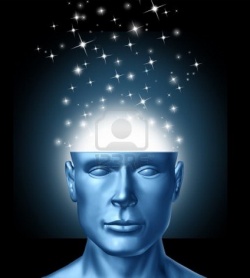The Aggreates
A 'person' can be described as a number of phenomena into a single working unit. In Western philosophy, one usually refers to Body, Mind and (sometimes) Soul or Spirit. In Buddhism, the Five Aggregates (Skandhas in Skt.) are used to analyse a person. Please note that the terminology can be confusing, as e.g. the term 'Feeling' refers to something very specific here: :
1. Form (rupa Skt.) - the body
2. Primary Consciousness (vijnana in Skt.) - Awareness, experience, in the sense that the presence of consciousness together with the sense organ and the object of the sense organ produces a sense experience or awareness.
3. Perception (samjna Skt.) - the five sense consciousnesses (smell, touch, taste, seeing and hearing) and mental consciousness, in other words, direct perception. Perception also refers to the activity of recognition, or identification, such as attaching a name to an object of experience. It includes the formulation of a concept about a particular object.
4. Feeling (vedana in Skt.) - this refers only to the mental separation of perceptions into pleasant, unpleasant and neutral (nothing more).
5. Compositional Factors, Volition (samskara Skt.) - these are all other remaining mental processes, in general "thoughts".
To begin with, it is interesting to see that four out of five aggregates are concerning the mind, and they do not directly correspond to the divisions made in Western psychology at all. Furthermore, the distinctions in Buddhist psychology are made from the point of view of how to obtain liberation and buddhahood; and certainly not to figure out how 'the brain works'.
Simply said, in Buddhism, the brain is considered a part of the body where many of the instructions of the mind are led to the other parts of the body, it is not regarded as the 'factory of thoughts'; thoughts are purely a function of the non-physical mind.
"From contact comes feeling.
From feeling comes reaction.
This is what keeps us in the cycle of birth and death.
Our reactions to our feelings are our passport to rebirth."
Ayya Khema
To use a simple example of how this works, let's say: something touches our hand:
- This is physical contact, and (as we know from Western science) our nerve cells pick up the movement of the skin, and translate it into energy (more subtle part of the Body).
- This energy is then picked up by Primary Consciousness, which is an aspect of the mind, in Buddhism, this is actually called the Contact (see below as the 5th. Omnipresent Mental Factor); the contact between the physical and the mental aspects.
- Next, the mental process of Feeling evaluates the Perception and decides it to be pleasant, unpleasant or neutral.
- Simultaneously, Perception (Recognition/Discrimination) gets to work in finding out what the thing is that touches my hand, is it pressure or heat, etc. and is it related to other information; maybe I see a table near my hand and consider it likely that my hand must be touching the table.
- Based on the Feeling and Discrimination, the mind creates the Compositional Factors/Volition, which are for example, the reaction to the hand to withdraw if it is unpleasant, an instruction to the eyes to check what is touching the hand, possibly projections/thoughts like 'it must be this bothersome fly again' or 'I am touching the table I am walking past' etc.
